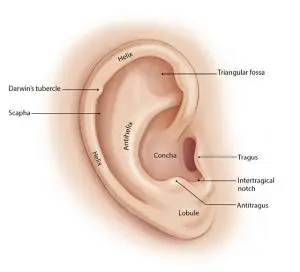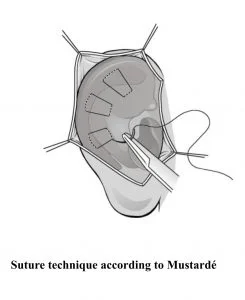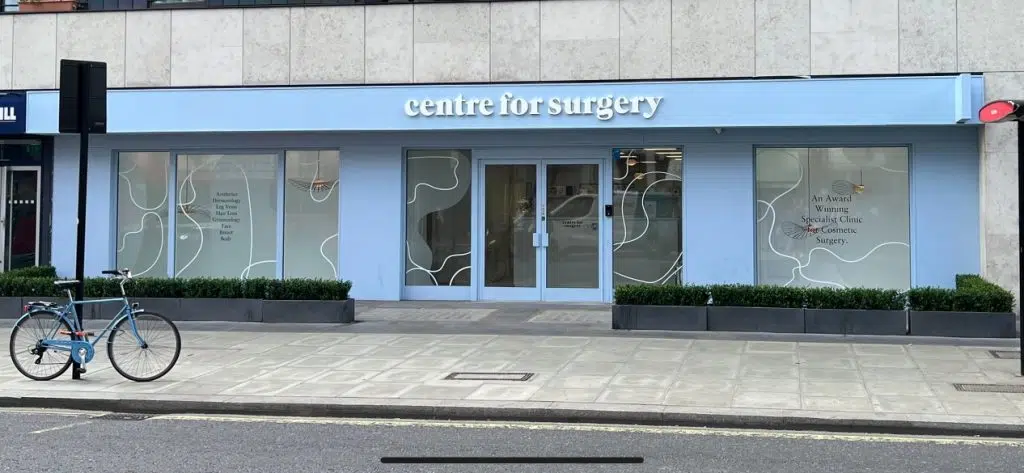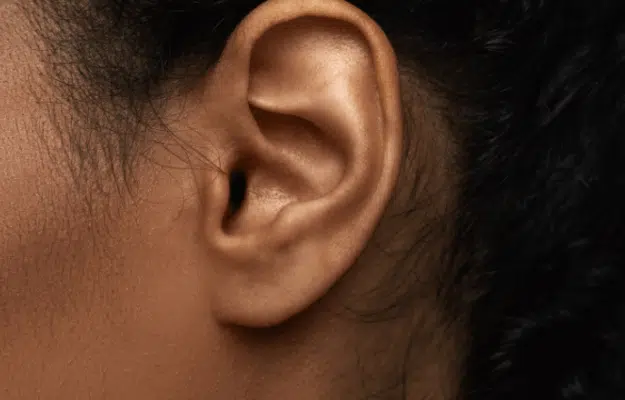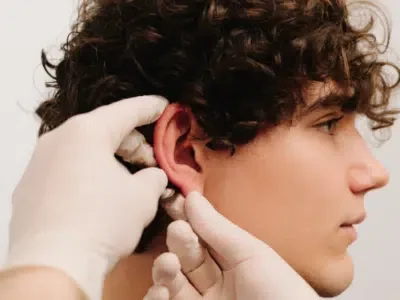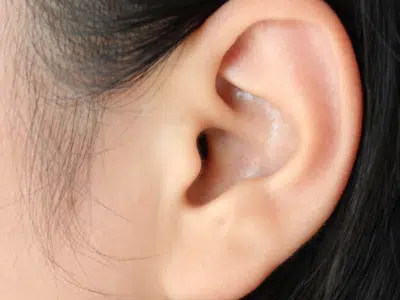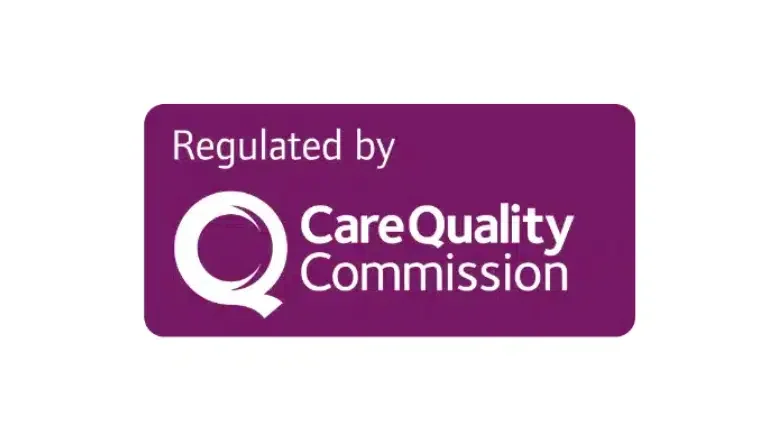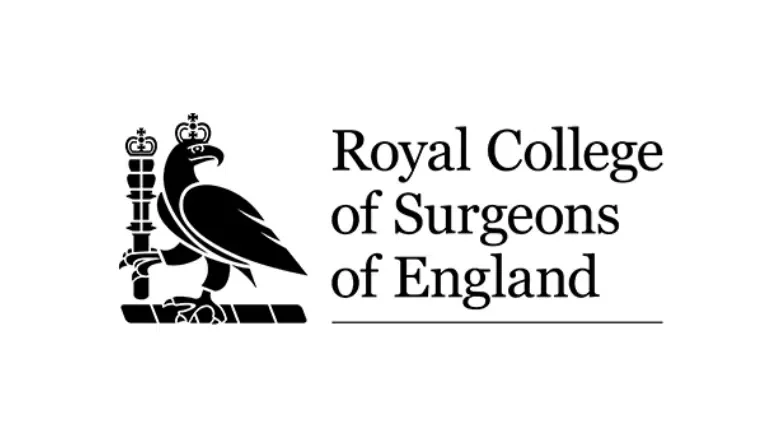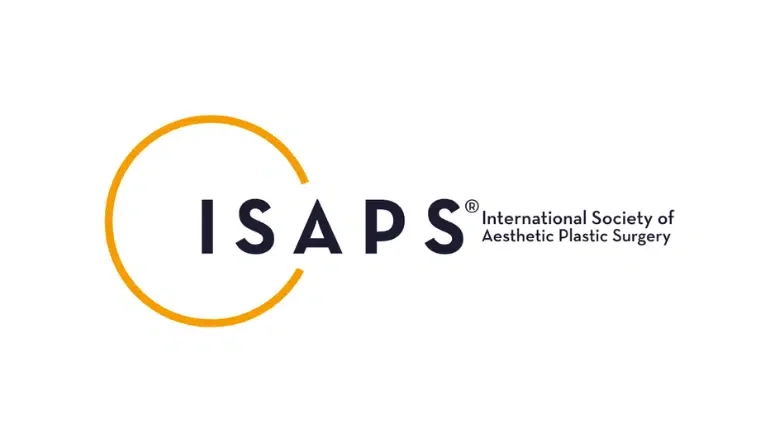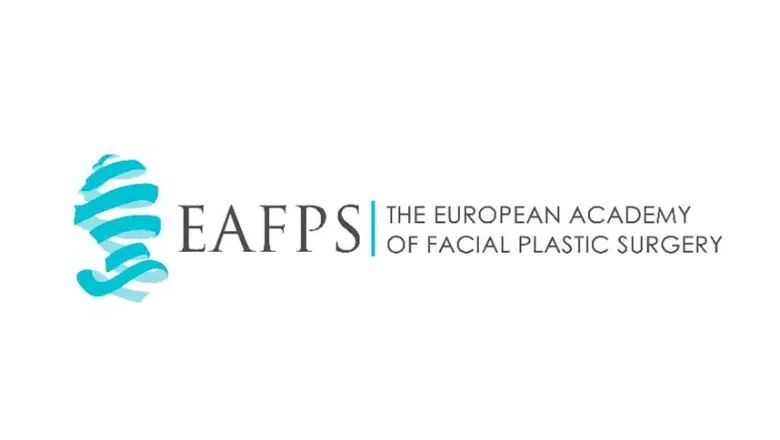Otoplasty Ear Surgery in London & UK
Ear surgery or otoplasty aims to correct aesthetic imperfections
Prominent Ear Correction, also known as otoplasty, is a cosmetic surgery that aims to improve the appearance of the ears by changing their size, shape, or position. This procedure can have a significant impact on a person’s appearance and self-confidence, and the results can last a lifetime. For people who are self-conscious about their ears, whether it’s due to protruding or bat-like ears, or simply feeling their ears are too large, otoplasty can be a life-changing option. Children who are being teased or bullied due to the appearance of their ears may also benefit from this surgery.
RELATED: Benefits of Otoplasty
Centre for Surgery is a leading provider of otoplasty, offering a range of options to help patients achieve their desired look. During the surgery, the surgeon will make incisions behind the ear, reshape the cartilage, and reposition the ear closer to the head, creating a more natural appearance. The procedure is typically performed on an outpatient basis under local anaesthesia, and patients can expect to return home the same day.
Here are some alternative names for otoplasty:
- Ear reshaping surgery
- Ear pinning
- Ear correction surgery
- Ear reduction surgery
- Pinnaplasty
- Otopexy
- Bat ear correction
- Protruding ear correction
- Ear surgery
- Cosmetic ear surgery
Prominent ears can be a source of significant psychological morbidity with teasing or bullying in school or issues in the workplace. Surgeons at Centre for Surgery only perform otoplasty on adults over 18 years of age.
What is Otoplasty Ear Surgery?
Otoplasty is a cosmetic surgical procedure that aims to improve the appearance of the ears. It involves reshaping the ears, changing their size or position, or improving their symmetry to create a more aesthetically pleasing look. This procedure is often chosen by individuals who are self-conscious about the appearance of their ears due to a congenital deformity, injury, or simply feel that their ears are out of proportion with their face.
RELATED: Ear Reshaping Surgery – What to Expect From an Otoplasty Procedure
There are several types of otoplasty that may be performed depending on the patient’s unique needs and goals. The most common types of otoplasty include:
- Ear pinning: This type of otoplasty is used to correct protruding ears by moving them closer to the head.
- Ear reduction: This type of otoplasty is used to reduce the size of the ears, making them more proportionate with the face.
- Ear augmentation: This type of otoplasty is used to increase the size of the ears, typically to correct a congenital deformity.
- Earlobe repair: This type of otoplasty is used to correct a torn or stretched earlobe.
- Earlobe reduction: Earlobe reduction is a cosmetic procedure that involves removing a portion of the earlobe to reduce its size and improve its appearance.
Otoplasty Before & After Photos
If you are considering otoplasty and would like to see the quality of results you can expect at Centre for Surgery, we invite you to visit our clinic. Here, you can browse through our extensive gallery of otoplasty before and after photographs showcasing the transformations of our real patients following their otoplasty surgery.
Seeing these photos can help you understand the potential outcomes and provide a realistic expectation of the results. However, it’s important to note that every individual is unique, and outcomes can vary significantly based on personal circumstances.
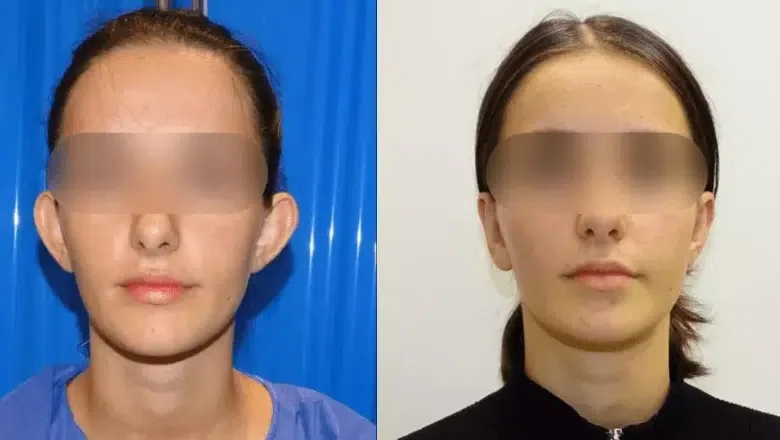

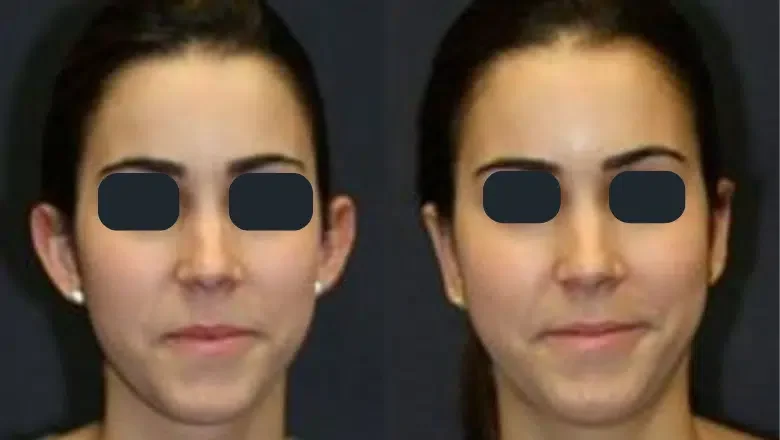



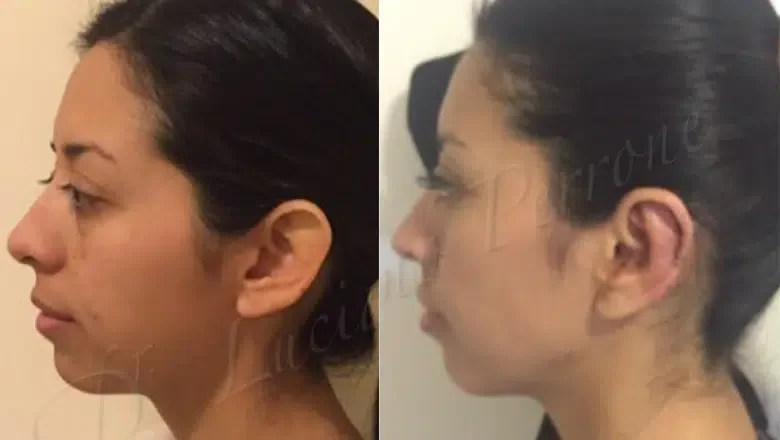

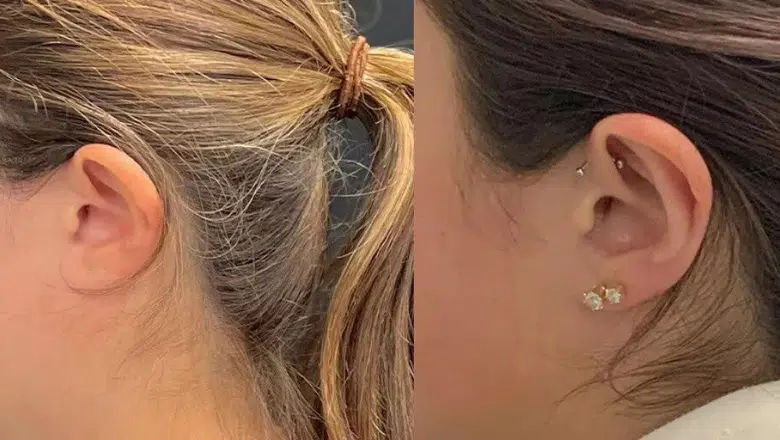
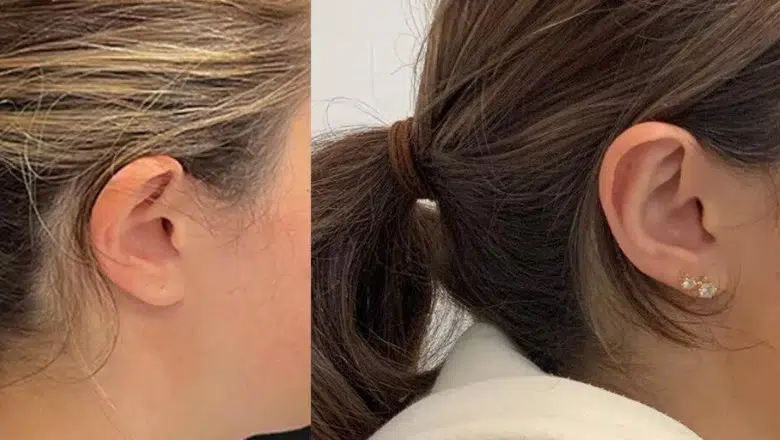
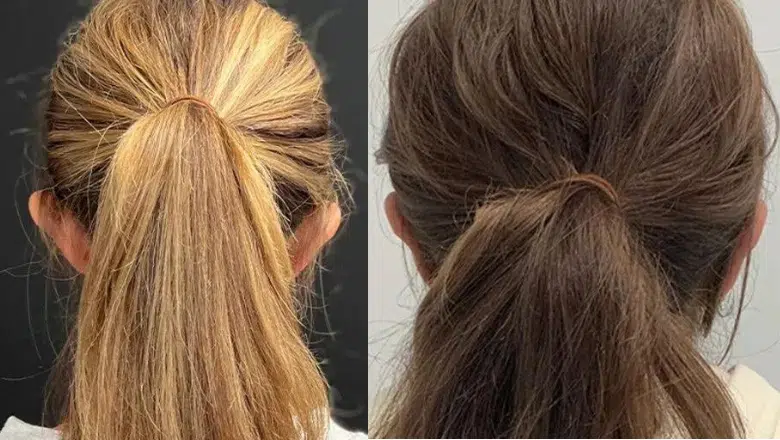
Benefits of Ear Surgery
Ear surgery brings numerous advantages to those who are self-conscious about their ears’ appearance. This surgical intervention not only enhances physical appearance but also contributes significantly to emotional well-being.
One of the primary benefits of ear surgery is the improvement in appearance. By correcting deformities, reducing ear size, enhancing symmetry, or bringing the ears closer to the head, the surgery can transform how individuals feel about their looks. These changes often lead to a substantial boost in self-confidence and an overall better self-image.
Ear surgery is particularly effective in correcting congenital deformities such as microtia or prominent ears. These conditions can have a profound impact on a person’s quality of life and self-esteem, and addressing them through surgery can be life-changing.
Another critical aspect of otoplasty is its ability to repair traumatic injuries. Whether it’s torn earlobes or other damage that alters the ear’s shape or position, surgery can restore a natural appearance. This not only improves aesthetics but also helps individuals regain their confidence.
For those who wear glasses, ear surgery can be especially beneficial. By reducing the size of the ears or positioning them closer to the head, the fit of eyeglasses can be improved, making them more comfortable to wear.
In some instances, ear surgery can even enhance hearing. Correcting deformities that affect the ear canal or eardrum can improve auditory function, providing a dual benefit of cosmetic and functional enhancement.
The results of ear surgery are typically long-lasting, offering a permanent solution that significantly uplifts a person’s quality of life and self-esteem. Furthermore, the incisions made during the procedure are usually discreetly placed behind the ears or within the natural folds, resulting in minimal visible scarring.
What are the different types of Ear Surgery?
Otoplasty is also known as ear reshaping surgery. It encompasses a wide range of aesthetic and reconstructive surgery to address the size and shape of the ear and earlobe, thereby leading to improvements in appearance and functionality.
RELATED: Otoplasty FAQs – Q&A About Ear Reshaping Surgery
Ear reduction surgery
Ear reduction is a surgical procedure designed to reduce the size of excessively large ears. The presence of overly enlarged ears can result in a lack of balance with the rest of the facial features, leading to a considerable loss of self-confidence and anxiety in those affected by oversized ears. This is often why many patients choose to have an otoplasty procedure in London. The medical description for excessively large ears is also referred to as macrotia.
In common with other types of ear surgery, the surgeon will aim to remove excess skin and cartilage to reduce the size of the ear. Ear reduction surgery can be targeted at either the whole ear or a part of the upper or lower ear. The ear’s height and width can be effectively addressed with ear reduction surgery. A more proportionate facial appearance can be achieved with ear reduction to make overly large ears smaller.
Stretched earlobes are a common problem caused by applying heavy jewellery and can be effectively treated with earlobe reduction surgery. Those with tribal earlobes often develop large skin redundancy followed by the removal of the large rings, and an ear reduction procedure can effectively correct the appearance of the earlobes.
Whilst pinnaplasty surgery deals with ear protrusion, ear reduction surgery is designed to address only ear size. Ear reduction surgery and earlobe reduction can significantly improve the appearance of the ear, leading to a significant improvement in self-confidence.
Ear correction
Ear correction or ear corrective surgery is a generalised term to describe a range of surgical procedures for correction of the size or shape of the ear from a number of potential causes, which include congenital causes and trauma. Ear correction surgery is commonly performed for babies who are born with either very small or congenitally absent ears (also known as microtia). This type of surgery is often performed quite early on so as to minimise any disruption to the Child’s hearing. Most commonly, a prosthesis can be used or a more extensive reconstructive procedure to rebuild the congenitally deficient ear.
Traumatic injury to the air is relatively common and is most commonly due to biting injuries or lacerations, and these types of injuries are most commonly dealt with in the emergency department. Where there is a potential infection risk, the ear is often left to heal before a later reconstructive procedure is performed, and similar surgical methods are utilised for those used to treat congenital ear deformities.
In some cases, the ear piercing procedure may lead to a localised infection, which can sometimes affect the ear cartilage, leading to changes in the ear’s structure. In the most complex cases, the surgeon may need to use rib cartilage to reconstruct the damaged ear.
The cauliflower ear is a significant post-traumatic ear deformity caused by repetitive trauma to the ear, leading to small microhemorrhages with repeated injuries, and is common in contact sports such as rugby. As the injury is often neglected, the ear often becomes hard and scarred, giving rise to the characteristic cauliflower appearance. The condition can also develop with boxes. The surgical approach to treating a cauliflower ear involves correcting the overlying skin on top of the cartilage and removing some underlying scar tissue.
With the rise of skin cancer, the exposed parts of the face and ear are most at risk. In the case of skin cancer affecting the ear, the condition is effectively treated with surgical excision combined with a reconstructive procedure.
Pinnaplasty
Pinnaplasty is a commonly performed surgical procedure to address prominent and protruding ears. Several recognised causes of overly protruding ears include an overdeveloped concha caused by excessive cartilage and an immature anti-helical fold. In practice, ears sticking out is often a result of both factors.
During the pinnaplasty procedure, the surgeon places the incision at the back of the ear and then removes a portion of the overlying skin from the top of the cartilage. In the most common type of pinnaplasty technique, the cartilage is surgically reshaped to enable the ear to sit closer to the head. Pinnaplasty is also ideal for correcting asymmetry between the two ears. Ear pinning surgery can significantly improve a patient’s self-confidence. Through expert ear reshaping, the correction of size, shape or an overly prominent appearance can be achieved. The procedure takes one to two hours, often with a local anaesthetic alone. Ear pinning is most commonly performed in children to reduce the risk of bullying at school, and children as young as seven years old can have the procedure. By this time, the ears have often reached their final size. The procedure is not performed in those under five as the underlying ear cartilage is too fragile to retain the surgical sutures. Ear pinning surgery is only performed on adults over 18 at Centre for Surgery.
Ideal candidates for Otoplasty
The ideal candidate for otoplasty is someone who is unhappy with the shape, size, or positioning of their ears. This may be due to a congenital defect or an injury, but it can also be due to personal preference. For example, some people may feel self-conscious about ears that protrude too far from the head or want to correct asymmetry in the ears.
In general, otoplasty is a safe and effective procedure for patients who are in good health. However, certain factors can make a person a better candidate for otoplasty surgery. These include:
Age
The best age for otoplasty is between 4 and 14 years old. This is because the ear cartilage is still soft and pliable, making it easier to reshape and mould. However, otoplasty can be performed on patients of any age. Centre for Surgery only performs otoplasty on patients over the age of 18.
Ear development
In order for otoplasty to be successful, the ear must be fully developed. This means that the cartilage in the ear must be fully formed, and the earlobe must be well-defined.
Overall health
Patients should be in good overall health and have no underlying medical conditions that could increase the risk of complications during or after the surgery.
Realistic expectations
Patients should have realistic expectations for the outcome of the surgery. Otoplasty can improve the appearance of the ears, but it will not make them perfect. Patients should also understand that there will be some scarring and that the final results may not be fully visible until several months after the surgery.
Mental health
Patients should be emotionally stable and have a positive self-image. Otoplasty can be a life-changing procedure for some patients, but it is not a cure for low self-esteem or body dysmorphic disorder.
Otoplasty procedure
Otoplasty, also known as pinnaplasty or ear pinning, is an effective way to surgically alter the appearance of your ears. It can correct protruding ears or those with unfolded configurations. Otoplasty is considered to have one of the highest patient satisfaction rates of any cosmetic surgical procedure.
Otoplasty can be performed on either one or both ears, depending on your wants and needs. If you have large earlobes, these can also be reduced at the same time.
At Centre for Surgery, your otoplasty procedure will be performed in one of our dedicated cosmetic surgery facilities. The procedure takes about two hours and is typically performed under local anaesthesia, although it can be performed under a general anaesthetic if you prefer to be asleep.
Cartilage Moulding vs Cartilage Breaking surgical techniques
In otoplasty, there are two recognised surgical techniques. The first is the cartilage moulding technique. In the moulding technique, there is no excision of cartilage. The method relies primarily on precise suture placement to facilitate the pinning of the ears closer to the side of the head. The cartilage-breaking technique involves the surgical removal of cartilage to improve the shape and pin the ears back to the side of the head.
The most popular technique for cartilage preservation is the Mustarde method. This technique relies on suture placement alone, which restores a normal-looking anti-helical fold and is simple to perform. The Mustarde method uses sutures placed in a horizontal mattress configuration along the full thickness of the cartilage at the back of the ear and through the skin at the front of the ear. This method only corrects the conchal bowl, and other techniques will be required alongside this. The Mustarde method is used for abnormalities of the upper third of the ear.
The Furnas method is for addressing an excessively deep conchal bowl and a well-defined anti-helical fold. The Furnas method facilitates permanent retraction of the ear due to the surgical fixation to the mastoid fascial layer. The Furnas method can be combined with the Mustarde method, which is great if the anti-helical fold lacks prominence due to its underdevelopment.
Cartilage Breaking Techniques
The cartilage-breaking methods both involve the surgical removal of cartilage from the concha. There are two well-recognised cartilage-breaking methods:
Farrior method
With the Farrior method, there is a partial thickness excision along the rim of the conchal cartilage. The method produces a less pronounced correction to the antihelix.
Converse method
The converse is a more aggressive method suited to adults with more robust cartilage, correspondingly more pronounced pinning back of the ear, and simultaneous correction of the antihelix fold. This is an excisional technique involving the removal of a strip of cartilage that sits more at the front compared with the rest of the ear cartilage.
An otoplasty is performed as a day-case procedure, meaning you can go home the same day after recovering from your procedure. Anaesthetic options for otoplasty include both local anaesthetic and TIVA general anaesthetic. Most cases are comfortably performed with a local anaesthetic with or without oral sedation. In complex or revision cases or if you feel nervous about being awake, a general anaesthetic can be used.
Anaesthesia
The first step in the otoplasty procedure is to administer anaesthesia. Depending on the patient’s age and preference, the surgeon may use local anaesthesia with sedation or general anaesthesia.
Incisions
The surgeon will then make an incision behind the ear, in the natural fold where the ear meets the head. This incision allows the surgeon to access the cartilage in the ear.
Cartilage reshaping
Once the incision has been made, the surgeon will reshape the ear cartilage as needed. This may involve removing or adding cartilage or simply bending the cartilage to a more desirable shape.
Suturing
Once the cartilage has been reshaped, the surgeon will use sutures to hold it in place. The sutures may be placed on the front or back of the ear, depending on the extent of the reshaping needed.
Skin closure
Finally, the surgeon will close the incision with sutures or skin adhesive. The incision is typically closed with dissolvable sutures, which do not need to be removed.
The entire otoplasty procedure typically takes between one and two hours to complete, depending on the extent of the reshaping needed. After the surgery is complete, the patient will be taken to our dedicated recovery area, where they will be monitored for a short period of time before being allowed to go home.
Following the surgery, the patient will need to wear a special headband or dressing to help protect the ears and maintain their new shape. The surgeon will provide detailed instructions for caring for the ears after surgery, including when to change the dressing and how to clean the incision site.
Recovery after otoplasty
Otoplasty, also known as ear reshaping surgery, is a surgical procedure that can help improve the appearance of the ears. Recovery after otoplasty can vary depending on the extent of the surgery and the patient’s individual healing process. However, here is what you can generally expect during the otoplasty recovery period:
Immediately after Surgery
After the surgery is completed, patients typically spend some time in the recovery room to be monitored until they are alert and comfortable to return home. You will be wearing a headband-like dressing over the ears, which helps hold them in place and supports the healing process.
The First Week
During the first week after the procedure, patients may experience some swelling, bruising, and discomfort around the ears, which can be managed with pain medication. Patients may also experience some numbness or tingling sensation around the ears, which is normal and typically resolves within a few weeks.
The Second Week
During the second week, most of the swelling and bruising around the ears will start to subside, and patients can return to work or school, depending on their level of physical activity. However, it’s important to avoid any strenuous activities that may cause trauma or injury to the ears.
The Third and Fourth Week
During the third and fourth week, most of the swelling and bruising will resolve, and patients can resume their normal activities. However, it’s important to continue to avoid any activities that may cause trauma or injury to the ears, such as contact sports.
Long-Term Recovery
Full recovery after otoplasty can take several months, during which the ear tissue will continue to heal and settle into its new position. Patients will need to continue wearing the headband-like dressing for several weeks to support the healing process and maintain the new ear shape.
Following your plastic surgeon’s postoperative instructions closely is vital to ensure proper healing and avoid complications. Patients should avoid smoking, consuming alcohol, and taking blood-thinning medications before and after the surgery, as they can interfere with the healing process.
To help the ears maintain their newly adjusted shape, your ears and head will be wrapped in a pressure garment. You will need to wear this garment at all times for about five to seven days. You must not alter the garment or get it wet. Wearing a wet or altered garment could result in infection and other complications. It is best to avoid touching the garment.
You can take medication to help alleviate any pain and discomfort you may experience. You will notice some swelling and bruising, but this is a normal side effect of otoplasty. To help reduce the side effects, you can:
- Keep your head elevated
- Avoid bending over
- Sleep with your head elevated on numerous pillows
- Do not sleep on your side or stomach
RELATED: Otoplasty Recovery – Top Tips after Ear Reshaping Surgery
Risks and complications of otoplasty
Like any surgical procedure, otoplasty (ear reshaping surgery) has potential risks and complications. Make sure to understand these before deciding whether to undergo the procedure.
Here are some of the most common risks and complications associated with otoplasty:
Bleeding
Any surgical procedure carries a risk of bleeding, and otoplasty is no exception. Although bleeding during surgery is rare, it can happen, and in some cases, it may require a return to the operating room.
Infection
Infections are a possible complication of any surgical procedure, and otoplasty is no exception. The risk of infection can be minimised by taking prescribed antibiotics and following post-operative instructions closely.
Scarring
As with any surgery, otoplasty involves incisions, which can lead to scarring. Most people experience minimal scarring, but in rare cases, the scars may be more noticeable.
Numbness
The ears may feel numb or tingly after otoplasty, which is a common side effect. Most people regain normal sensation in their ears within a few weeks after surgery, but in some cases, the numbness may be permanent.
Poor cosmetic outcome
Otoplasty is a cosmetic procedure, and like any cosmetic surgery, there is always a risk that the results may not meet your expectations. Choosing an experienced and skilled plastic surgeon can help minimize this risk.
Haematoma
A haematoma is a collection of blood that forms under the skin. Haematomas can occur after any surgery, including otoplasty. If a haematoma occurs, it may need to be drained to prevent complications.
Anaesthesia complications
General anaesthesia carries a small risk of complications such as allergic reactions, breathing difficulties, and cardiac arrest. However, these risks are generally very low in healthy patients and are carefully monitored during the procedure.
Need for Revision surgery
In some cases, revision otoplasty surgery may be necessary if the desired results are not achieved or if complications arise. Revision surgery carries its own risks and may require additional recovery time.
Otoplasty is generally a safe cosmetic surgery procedure, and risks and complications are relatively rare. At Centre for Surgery, risks are minimised by meticulous patient selection and thorough preoperative preparation. Our surgeons are trained in all the best techniques for otoplasty and emphasise the importance of following postoperative instructions by the patient.
Our otoplasty experts regularly attend national and international conferences to keep up to date with the latest advances in otoplasty surgery. At your consultation, your surgeon will discuss the risks and potential complications in detail to enable you to make a fully informed decision about otoplasty surgery.
Ear Surgery Costs London - How much does an otoplasty cost in London UK? Prices & Fees
There are several factors which will impact the final cost of your otoplasty procedure:
- Local anaesthetic or general anaesthetic
- Primary or revision otoplasty
- One or both ears
- Complex corrections
Why not call 0207 993 4849 and speak to one of our expert patient coordinators, who may be able to give you a rough costing prior to your procedure?
RELATED: How Much Is Otoplasty or Ear Pinning?
Always remember that price should never be the determining factor when it comes to choosing the right provider for your otoplasty procedure. You should have the confidence that our team will look after you before, during and after your procedure to the best of their ability.
Financing your otoplasty procedure
Centre for Surgery is fully approved to offer finance for otoplasty via our specialist finance partner, Chrysalis Finance. You no longer need to use your savings to pay for your treatment – you can apply to spread the cost of your procedure with Chrysalis Finance using their simple 1,2,3 application to pay for your procedure. Don’t wait until you have enough money for your treatment. Apply today and (subject to status) pay for your procedure easily in monthly instalments using one of their payment options. Chrysalis Finance is the only ethical provider focusing solely on providing specialist financing for medical procedures.
Otoplasty in London: Why Choose Centre for Surgery?
At Centre for Surgery, we are renowned for our expert approach to otoplasty, providing tailored treatments in the heart of London. Our state-of-the-art facility on Baker Street is where our experienced surgeons combine cutting-edge techniques with personalised care to ensure the best outcomes for our patients.
Exceptional Patient Care: Our dedicated team is committed to offering an exceptional level of care from your first consultation through to your post-operative follow-up. We understand that each patient’s needs are unique, and we pride ourselves on creating individualised treatment plans to achieve the most natural-looking results.
Patient Testimonials:
- “My experience at Centre for Surgery was outstanding. The staff made me feel completely at ease, and the results of my ear pinning surgery have given me so much confidence. I can’t recommend them highly enough!” – Emily R.
- “The surgeons at Centre for Surgery are truly artists. They transformed my ears with such skill and care. The entire process was smooth, and the aftercare was excellent.” – Johnathan P.
- “From my very first visit, I felt I was in good hands. The team was professional, and my surgery went perfectly. My ears look completely natural, and I finally love wearing my hair up!” – Sofia K.
Booking a Consultation: To book your otoplasty consultation and take the first step towards feeling more confident in your appearance, please contact us at:
- Phone: 0207 993 4849
- Email: contact@centreforsurgery.com
- Address: 95-97 Baker Street, London W1U 6RN
For more detailed insights into our clinic and to understand why we’re the preferred choice for your cosmetic needs, please visit our About Us page.
Finance Options: We believe in making cosmetic surgery accessible, which is why we offer a range of finance options, including 0% APR with Chrysalis Finance. You can find more information about our finance options here.
Further Information: If you’re looking to explore more about cosmetic surgery or wish to read about the experiences of past patients, our plastic surgery blog is an excellent resource.
Frequently Asked Questions: We also encourage you to visit our Clinic FAQs for answers to common queries about procedures, recovery, and what to expect from your surgical journey with us.
Our Baker Street Clinic: Nestled in the prestigious area of London, our Baker Street clinic is designed to provide comfort and privacy for all our patients. You can learn more about our clinic here.
Choose Centre for Surgery for your otoplasty in London, and experience the highest standard of care and excellence in cosmetic surgery.
Learn More About Otoplasty
-
NHS – Ear correction surgery, including ear pinning (otoplasty/pinnaplasty) — explains what surgery involves, when it’s done (often in children), what to expect before, during and after the operation, plus key safety points.
-
BAAPS – Setting Back Prominent Ears — details on how the surgery corrects ears that stick out, what techniques are used, likely outcomes and what recovery looks like.
-
BAPRAS – Ear Surgery Patient Information Guide — a guide covering various ear issues (prominent ears, misshapen ears, reconstruction), what surgery can achieve, and what it involves.
FAQs
-
What causes protruding ears?Protruding ears, also known as prominent ears, is a common aesthetic concern that many people seek to correct with otoplasty. Several factors can contribute to the development of protruding ears. In this response, I will discuss some of the most common causes of protruding ears.
Genetics: The most common cause of protruding ears is genetics. In many cases, prominent ears are an inherited trait that runs in families. The shape and size of the ear cartilage and the angle between the ear and the skull are determined by genetics, and these factors can contribute to the appearance of protruding ears.
Lack of development: Another common cause of protruding ears is a lack of development of the ear cartilage. The cartilage may not fully develop in some cases, causing the ear to stick out further from the head. This can be due to a variety of factors, including genetics, injury, or a medical condition.
Injury: Trauma to the ear can also cause it to protrude. This can occur if the ear is bent or twisted forcefully, or if there is a blow to the head that affects the shape of the ear cartilage.
Medical conditions: Certain medical conditions can also contribute to the development of protruding ears. For example, conditions that affect the connective tissue, such as Ehlers-Danlos syndrome, can cause the ear cartilage to be weaker and more prone to protruding.
Improper ear development: Improper development of the ear during fetal development can also lead to protruding ears. This can occur if the fetus is exposed to certain medications or toxins, or if there is a genetic abnormality that affects ear development.
In most cases, protruding ears are not a serious medical issue and do not affect a person's hearing or overall health. However, they can cause self-consciousness and may lead to teasing or bullying, particularly in children. Otoplasty is a safe and effective way to correct protruding ears and improve a person's self-image. -
What Age is Most Suitable for Otoplasty?Otoplasty can be performed at any age once the ears have reached their full size, which is typically around the age of 5 or 6 years. For children, it's often recommended to undergo the procedure before starting school to avoid any potential teasing or bullying. However, adults can also undergo otoplasty with no upper age limit, making it a viable option for anyone unhappy with the appearance of their ears.
-
Can Ear Pinning Surgery Be Done at Any Age?Yes, ear pinning surgery, or pinnaplasty, is possible at any age after the ears have fully developed. For both children and adults, ear pinning can provide significant improvements in the appearance and self-esteem.
-
Can ear pinning change the size of my ears?Certainly, ear pinning, also known as otoplasty, can adjust your ears in several ways. It can change their shape, size, and how much they stick out. This surgery is quite versatile when it comes to enhancing the appearance of your ears.
-
How Can I Have My Ears Pinned Back?To have your ears pinned back, you would undergo an otoplasty or pinnaplasty procedure. During this surgical process, the surgeon will reshape the cartilage of the ears to achieve a closer position to the head, effectively 'pinning' them back.
-
What is pinnaplasty?Pinnaplasty, also known as ear pinning, is an ear surgery procedure involving the repositioning of the ears closer to the side of the head which creates a more natural-looking appearance. A pinnaplasty or ear pinning surgery is a straightforward surgical procedure easily performed under a local anaesthetic. The procedure takes about 90 minutes to perform on average. In the ear surgery procedure, the ears are surgically repositioned using a combination of suture techniques and excision to reshape the cartilage to the desired size and shape. The resulting scars after ear pinning are not obvious and are often well concealed behind the ear or in the folds of the ear.
-
Why Do Some Ears Protrude More Than Others?Protruding ears often result from an underdeveloped antihelical fold, which is the inner ridge of the cartilage. This lack of development prevents the ear from folding properly towards the head, causing the ears to stick out.
-
Is It Possible to Make My Ears Smaller with Surgery?Yes, otoplasty can also involve reducing the size of the ears if they are disproportionately large compared to the size and shape of the head and face. This procedure adjusts the overall scale of the ears, making them more harmonious with your facial features.
-
Is it an option to have ear pinning done on just one ear?Absolutely, if you have one ear that sticks out more than the other, a surgeon can perform otoplasty on that single ear. The goal is to make both ears look symmetrical and balanced.
-
Am I an ideal candidate for otoplasty?Otoplasty is for those who have protruding ears that are impacting their self-esteem. You must be 18 years of age or older to have an otoplasty procedure at the Centre for Surgery. You should be in good physical and mental health and with realistic expectations of what the procedure can achieve. You should not have any untreated, chronic ear infection
-
How Complex Is Otoplasty?While otoplasty is a procedure that requires precision, it is generally not considered overly complex and can be performed on an outpatient basis. It should always be carried out by a qualified plastic surgeon to ensure the best outcomes.
-
Can ear pinning be done alongside other cosmetic surgeries?Indeed, it's quite common to have ear pinning done in conjunction with other procedures. For instance, you might also consider an eyelid lift or rhinoplasty, which is surgery to reshape the nose.
-
Will having my ears pinned improve my hearing?No, ear pinning is purely aesthetic and doesn't improve the function of the ears. It won't affect your hearing abilities.
-
What is the most commonly used surgical technique used for otoplasty surgery?There are two primary techniques that are most commonly used in otoplasty surgery: the cartilage scoring technique and the cartilage sparing technique.
The cartilage scoring technique involves making an incision behind the ear and then using a scalpel or other cutting instrument to score the cartilage. This allows the cartilage to be reshaped and bent into a more desirable position. The cartilage scoring technique is most effective for correcting protruding ears.
The cartilage-sparing technique, also known as the suture technique, involves making a small incision behind the ear and then using sutures to reshape the ear cartilage. The sutures are placed in a way that creates folds in the cartilage, which help to pull the ear back closer to the head. This technique is most effective for correcting ears that stick out too far from the head.
Both techniques can be used to correct a variety of ear shape and position issues. The choice of technique will depend on the patient's individual needs and the surgeon's expertise. -
What does ear reshaping surgery involve?Ear reshaping is easily carried out under a local anaesthetic with or without oral sedation and takes about 90 minutes to perform from start to finish. There are several different techniques, and the selection of the correct techniques depends on the underlying structural abnormality of the ear.
An ear pinning procedure starts with the incision placed in the crease between the ear and the skull to address the removal of excess cartilage that is the cause of ear protrusion. Using a suture technique, the ear is positioned closer to the head, with the incision well hidden in the natural skin fold.
After the otoplasty procedure, the incision is carefully sutured, followed by applying a head bandage gently wrapped around the head to keep the ears in the new position and protect the delicate cartilage while it is healing. -
What happens before the otoplasty procedure?You will be required to stop certain medications which increase the risk of bleeding and you will also need to use a special antiseptic solution before surgery to minimise the risk of infection.
-
Is ear reshaping surgery painful ?Otoplasty surgery is easily carried out under a local anaesthetic. The area is numbed with a local anaesthetic, so you should not feel discomfort during the procedure. After the procedure, most patients experience only a minor degree of pain and discomfort and are easily treated with painkillers. The ears may be tender to touch for up to two weeks. The protective garment helps to cushion the ears against any impact. By two weeks post-op, you should be pain-free after pinnaplasty.
-
What happens during the otoplasty procedure?An incision is made behind the ear close to the area between the ear skin and the skull. The skin is dissected off the ear to show the underlying ear cartilage, which is then re-contoured and pulled back towards the head using special stitches. A compression garment is applied, and patients can go home the same day.
-
How long does the otoplasty procedure take?The length of the otoplasty procedure, or ear reshaping surgery, can vary depending on several factors, including the extent of the surgical procedure and the technique used by the surgeon. In general, otoplasty surgery takes between one and two hours to complete.
The complexity of the surgery is one of the main factors that can affect the length of the procedure. The more complex the surgical procedure, the longer it will take to complete. For example, if the patient needs significant reshaping of the ear cartilage, this can take longer than a simple ear pinning procedure.
The type of anaesthesia used can also affect the length of the procedure. Local anaesthesia with sedation is commonly used for otoplasty surgery, as it allows the patient to remain comfortable and relaxed during the procedure without the need for general anaesthesia. However, if general anaesthesia is used, the procedure may take longer due to the additional time needed for the anesthesia to take effect and wear off. -
What is otoplasty recovery like?The recovery process after otoplasty, or ear reshaping surgery, can vary from person to person. However, in general, patients can expect to experience some swelling, bruising, and discomfort in the days and weeks following the surgery.
Immediately after the surgery, patients will be taken to a recovery area, where they will be monitored for a short period of time. Once the patient is stable, they will be allowed to go home the same day as the surgery. Patients will need to have someone with them to drive them home and help them with daily activities for the first few days.
For the first week after the surgery, patients should expect to experience some swelling, bruising, and tenderness around the ear area. Pain medication prescribed by the surgeon can help to manage any discomfort. Patients should avoid any strenuous activities or anything that could put pressure on the ears for several weeks after the surgery.
Patients will also need to wear a headband or dressing around the ears for several days or weeks after the surgery, depending on the surgeon's instructions. This helps to protect the ears and maintain their new shape.
Most patients are able to return to work or school within a week after the surgery, but it is important to avoid any activities that could put pressure on the ears or cause injury. Patients should also avoid sleeping on their side or putting any pressure on the ears while they heal.
Full recovery from otoplasty can take several weeks to a few months. Patients should attend all follow-up appointments with their surgeon and follow their post-operative instructions carefully to ensure the best possible healing and minimise any discomfort. -
What is the downtime after ear reshaping surgeryWith otoplasty surgery, there is little, if any, downtime after surgery. The surgeon may recommend taking one week off work, particularly if it is physically demanding. You must continuously wear a head support bandage for the first week to protect the healing incisions and cartilage. It is normal to experience a degree of bruising and swelling in the early stages, and it will subside quickly with time. The head bandage should then be worn during the night for three weeks. Over-the-counter painkillers are effective for any mild discomfort you have had. You may have a normal wash one week after the procedure. A full recovery typically takes about 4 to 6 weeks after surgery.
-
What are the risks of otoplasty?Risks for otoplasty include weakening and breakage of the sutures which can lead to the recurrence of the original problem, bleeding, infection and abnormal scarring. Our surgeons take special precautions to minimise the risk of these complications and can perform revision surgery if required.
-
Will I have visible scars after ear reshaping surgery?As with any surgery, it is normal to be concerned about visible scarring after the procedure. However, with proper technique and care, any scars from otoplasty can be minimal and easily concealed.
During otoplasty, the surgeon will typically make the incisions behind the ear, in the natural crease where the ear meets the head. This placement helps to conceal the incisions and minimise the appearance of any resulting scars. Additionally, the surgeon will use fine sutures to close the incisions, which will be removed after about one week.
After the incisions have healed, it is important to care for the incision site to minimise the risk of scarring. This may involve keeping the incision site clean and dry, avoiding exposure to sunlight, and using scar-minimising products recommended by your surgeon. Following your surgeon's post-operative instructions carefully can help to ensure the best possible healing and minimise scarring. -
Are the results from ear reshaping surgery permanent?The results from otoplasty surgery are generally permanent in nature. Protecting your ears during the recovery period is important to prevent any unintended knocks. The healing cartilage should be treated very much like a fractured bone kept in plaster while it heals. For otoplasty performed without the removal of cartilage, it is not a requirement to wear a head bandage, and the suture line can be covered with brown tape.
-
Is it possible to redo ear pinning if I'm not satisfied?Yes, if the results don't meet your expectations, a revision can be considered. However, it's important to wait until your ears have fully healed from the initial surgery before undergoing a revision.
-
After otoplasty, will I have to wear a garment or bandage on my head?The sutures that are used in otoplasty are very delicate, requiring you to wear a band that holds the ears in place for 5-7 days and should not be allowed to get wet.
-
Is there much discomfort after otoplasty?After otoplasty, it is normal to experience some discomfort, but the amount of discomfort can vary from person to person. The degree of discomfort depends on several factors, including the individual's pain threshold, the extent of the surgical procedure, and the type of anesthesia used during the surgery. In this response, I will describe what to expect in terms of discomfort after otoplasty.
Immediately after the surgery, it is common to experience some pain, swelling, and tenderness around the ear area. The degree of pain and discomfort can be managed with pain medications prescribed by the surgeon. Patients may also experience some numbness or tingling in the ear area, which typically resolves within a few days or weeks after surgery.
Most patients are able to resume normal activities within a few days after surgery, but it is important to avoid strenuous activities or anything that could put pressure on the ears for several weeks after the surgery. Patients should also avoid sleeping on their side or putting any pressure on the ears while they heal.
-
How much bruising and swelling should I expect after ear surgery?Bruising and swelling are common after any surgical procedure, including ear surgery or otoplasty. The amount of bruising and swelling you can expect after ear surgery can vary depending on several factors, including the extent of the surgery and the individual's healing process.
Typically, patients can expect some degree of bruising and swelling around the ears and the surrounding area after ear surgery. The bruising and swelling may appear more prominent in the first few days after the surgery and gradually subside over the next few weeks. -
What is the best sleeping position after otoplasty surgery?After otoplasty surgery, it is important to take care to avoid putting pressure on the ears while they are healing. This includes being mindful of your sleeping position. Sleeping in the wrong position can put pressure on the ears and cause discomfort or delay healing. In this response, I will discuss the best sleeping position after otoplasty surgery.
For the first week after otoplasty surgery, it is recommended that patients sleep on their backs with their heads elevated. This can help to reduce swelling and discomfort in the ear area. Patients should avoid sleeping on their side or stomach, as this can put pressure on the ears and delay healing.
After the first week, patients can gradually transition to sleeping on their side, but it is important to avoid putting pressure on the ears. One way to do this is to use a soft pillow or cushion to support the head and neck while sleeping. The pillow should be placed under the head and neck but not under the ears. This can help to prevent any pressure or rubbing on the ears while sleeping. -
When can I shower after otoplasty surgery?The time frame for when it is safe to shower after ear surgery, or otoplasty depends on the type of surgery and the individual's healing process. Typically, patients are advised to wait at least 48 hours after the surgery before showering. When showering, it's important to avoid getting the ears wet, use mild soap, and pat dry with a clean towel.
-
When can I resume wearing glasses after otoplasty?After otoplasty surgery, your surgeon will place a headband which should be worn for one week to protect the ears and keep them in the correct position to facilitate good healing. The otoplasty head garment should be worn at night for a full month to protect the ears. The wearing of glasses should be avoided for the first three weeks but may be longer depending on how your healing is at your postoperative appointment. Contact lenses are a good alternative if you perform visually intensive tasks.
-
What is the difference between an otoplasty and a pinnaplasty?Otoplasty and pinnaplasty are two different terms that are often used interchangeably to describe cosmetic surgery procedures that reshape the ears. However, there is a slight difference between the two procedures.
Otoplasty is a surgical procedure that is performed to correct a wide range of ear deformities, including congenital deformities, protruding ears, and asymmetry. During the procedure, the surgeon will make incisions behind the ear and manipulate the cartilage to reshape the ear and create a more natural-looking appearance.
Pinnaplasty, on the other hand, is a specific type of otoplasty that is used to correct prominent or protruding ears. The procedure involves making an incision behind the ear, removing or reshaping the cartilage, and then repositioning the ear closer to the head to reduce its protrusion. The result is a more natural-looking ear shape that is in proportion with the rest of the face. -
Does an otoplasty affect hearing?An otoplasty procedure is exceedingly unlikely to impact your healing and balance. The structure of the ear is divided into three main components, the inner ear, the middle ear and the outer ear (or pinna). All three parts contribute to the sense of hearing. However, the main hearing centres are found in the inner and middle ears. The otoplasty procedure focuses on the outer ear, and this part does not contribute to the sense of hearing.
-
Will My Ears Grow Back to Their Original Shape After Otoplasty?In adults, the reshaped or resized ears will not "grow back" to their original form after otoplasty. In children, the ears may continue to grow naturally, but the effects of the surgery are generally permanent.
-
When will I see final otoplasty results?The final results of otoplasty can take several months to become fully visible. The exact timeline for the final results will depend on several factors, including the extent of the surgery, the patient's individual healing process, and the specific techniques used during the procedure.
After the surgery, patients may notice some initial swelling, bruising, and discomfort around the ears, which is normal and typically resolves within a few weeks. The dressing or headband that is worn immediately after the surgery will be removed after a few days or weeks, depending on the surgeon's instructions.
During the first few weeks after the surgery, the ears will gradually begin to take on their new shape as the swelling subsides. However, it's important to note that some minor asymmetry or unevenness may still be present during this time.
Over the next several months, the ear tissue will continue to heal and settle into its new position, and the final results of the surgery will become more apparent. In general, patients can expect to see the final results of otoplasty around six months to a year after the surgery. -
Does an otoplasty qualify for NHS treatment?In some cases, otoplasty or pinnaplasty (ear reshaping surgery) may be available on the NHS (National Health Service) in the UK if it is deemed medically necessary to correct a congenital deformity or disfigurement that affects hearing or causes significant psychological distress.
The NHS considers otoplasty or pinnaplasty for the following conditions:
Significant congenital ear deformity
Significant asymmetry of the ears
Prominent or protruding ears that cause psychological distress in children or adults.
However, the criteria for NHS funding of otoplasty or pinnaplasty vary depending on the local NHS trust, and not all cases will meet the criteria for funding. In some cases, the NHS may require evidence of the psychological impact of the ear deformity, such as a report from a psychiatrist or psychologist.
It's important to note that if the ear surgery is considered purely cosmetic and does not meet the criteria for NHS funding, the patient will need to pay for the procedure privately. -
Does private health insurance in the UK cover ear pinning?Ear pinning is generally seen as a cosmetic procedure and, as such, is not typically covered by private health insurance in the UK.
-
Can children have ear pinning surgery?Children with overly prominent ears do not experience hearing difficulties, although their prominent nature can cause bullying at school. Ear pinning surgery is a commonly performed procedure in the NHS for children. The minimum age requirement is six years and older, as the ears will have matured in their growth and development by this stage. In some cases, it may be better for the child first to complain that they are unhappy with the appearance of their ears, often due to bullying and would prefer to have the position or shape of the ears surgically corrected with ear pinning surgery.
Otoplasty surgery is performed in the same manner in both children and adults. The difference lies in the type of anaesthetic used. Otoplasty is very commonly performed under a local anaesthetic in adults but is routinely performed under a general anaesthetic in children. -
Is It Possible to Undergo Otoplasty More Than Once?Although otoplasty is typically a one-time procedure, there are cases where revision otoplasty may be necessary. This could be due to the initial results not meeting expectations or the occurrence of complications. A second procedure, known as revision otoplasty, can correct any issues from the first surgery.
What To Expect
The consultation
After you have decided to learn more about otoplasty, we recommend a face-to-face consultation with one of our expert otoplasty surgeons as the first step in your journey towards achieving a full aesthetic ear correction. When you meet with one of our surgeons, your surgeon will take time to listen carefully to what you hope to achieve and give you an expert opinion on what can and cannot be achieved after performing a thorough physical examination of the ears. Your surgeon may use computerised digital imaging to map the structure of the ears in detail to give you an idea of what your nose could look like after your procedure.
Your surgeon will also take a number of measurements as part of a detailed facial analysis. Finally, high-resolution photographs are taken in a number of views of the ears from different angles. Your surgeon will also discuss with you the potential risks and complications of pinnaplasty and what to expect in the postoperative phase during your healing and recovery. It is important to know what medicines you are taking as some medicines can interfere with blood clotting and may need to be stopped. Any history of medical conditions or previous surgery will also be recorded, and all the compiled information will be used to decide on your medical fitness for the otoplasty procedure.
After a recommended two-week cooling-off period and provided you are appropriate for the procedure, you can then decide whether you would like to proceed with the procedure. If you are unsure about any aspect of the procedure and what it entails, then we would invite you to return for as many follow-up consultations with your surgeon as you like to make sure that pinnaplasty surgery is right for you. The consultation lasts about 45 minutes on average. It may take longer if your procedure is going to be more complex. We would actively recommend attending a follow-up consultation to ensure all your questions are answered.
Before the procedure
Once you have decided to move forward with ear pinning surgery. Our preoperative assessment team will be in touch to assess medical fitness prior to coming in on the day of surgery. There are a number of instructions to follow before your procedure including stopping any aspirin-containing medicines as these can increase bleeding and ideally stopping smoking. Smokers have a higher risk of slower wound healing as well as more chance of wound complications. On the day of your procedure, you must follow the preoperative fasting guidance which includes no food for 6 hours prior. Only clear fluids (water) are allowed up to 2 hours before your procedure.
On the day of your procedure
When you arrive for your otoplasty procedure, you should aim to arrive on time to allow the admission process to proceed smoothly. One of our nurses will formally admit you and will check a number of items including making sure you have your postoperative medications. You will have your vital signs measured including blood pressure and heart rate. The anaesthetist will then meet you to perform a preoperative airway assessment. Finally, your surgeon will consent you for the planned procedure followed by a detailed preoperative marking of the areas to be treated.
The otoplasty procedure takes about between 1-3 hours to perform and is easily performed under a local anaesthetic with or without oral sedation to make you feel relaxed. The option of TIVA general anaesthesia is also available if you prefer to be asleep for your procedure. The surgeon will first inject the ears with a local anaesthetic to make the area fully numb. Incisions will then be made to expose the underlying cartilage for reshaping. The incisions can be located on the front or back of the ear depending on the degree of correction required. The surgeon will gently separate the cartilage from the ear skin. The cartilage is then shaped using precise suture techniques to position the ears closed to the side of your head. The surgeon can also correct ear asymmetry if this is a problem for you. The otoplasty technique used in your procedure is dependent on what is to be achieved from the otoplasty surgery. Once the cartilage has been reshaped, the new position is carefully secured with non-absorbable sutures. The incision is then closed with absorbable sutures. Following this, a securing pinnaplasty garment is applied to the head to protect the ears and maintain them in the new position. Any scarring from otoplasty is often well concealed behind the ear.
After the procedure is complete, you will spend time in our recovery suite where you will be prepared for nurse-led discharge once you have met all the discharge criteria. It is important to have a responsible adult accompany you home and to look after you for the first 24 hours.
After your procedure
Once you are safely at home, you can be assured of having access to our specialist postoperative team round the clock. You will be given a contact number to contact your surgeon in the first 24 hours after surgery if there is any concern. An otoplasty procedure is associated with very little in the way of postoperative discomfort although some discomfort is common for the first week after surgery. Bruising should start to subside after 7-10 days. You should avoid intense sunlight after the procedure to reduce the risk of pigmentary changes.
Our postoperative team will look to call every day for the first 2 weeks after your procedure. This is so we can monitor your levels of comfort and can alert your surgeon if there is any concern. Our proactive approach allows the detection of any potential issues early which results in more effective treatment. You are advised to rest for at least a few days after your ear pinning procedure which will also help with pain control. Heavy exercise should be avoided for at least the first 4 weeks. Our postoperative clinical team will assess your face-to-face at your 1-week postoperative appointment to ensure healing is progressing normally and the wound site are healthy. Your head garment is usually removed at one or two weeks post-op which includes a wound check at this time to make sure the wound is healing normally. You will be booked for your surgeon's follow-up appointment for 6 weeks after your procedure.


